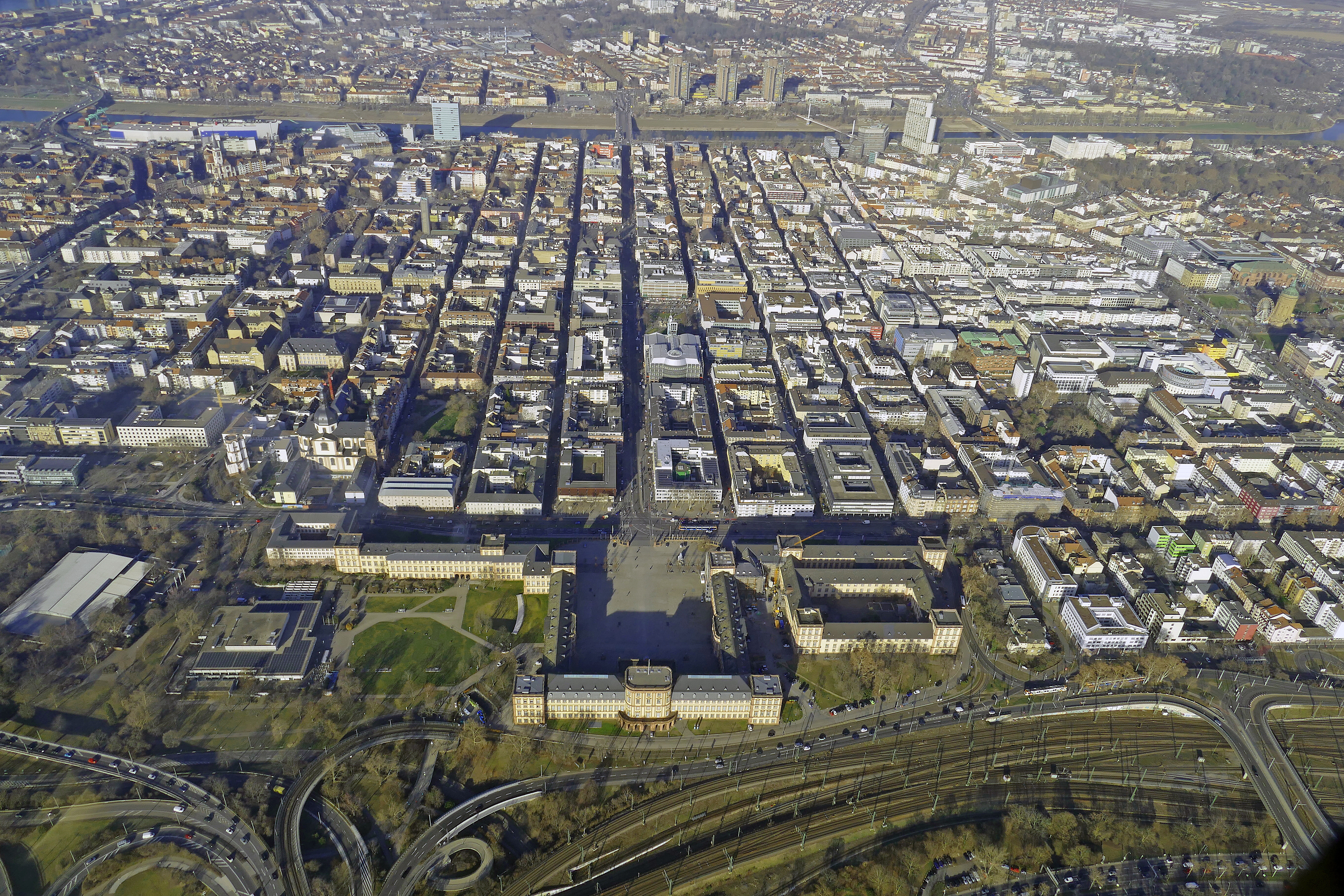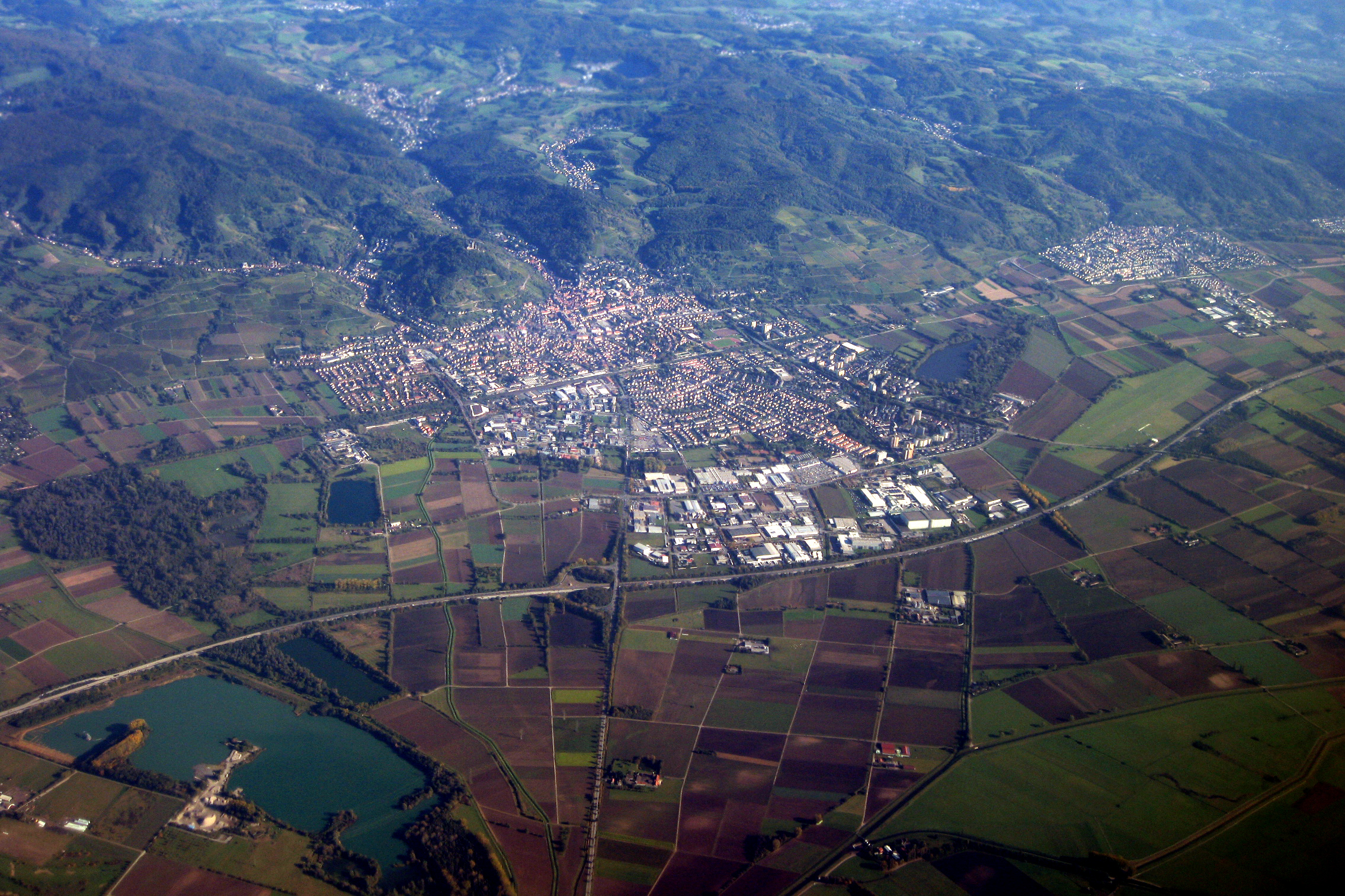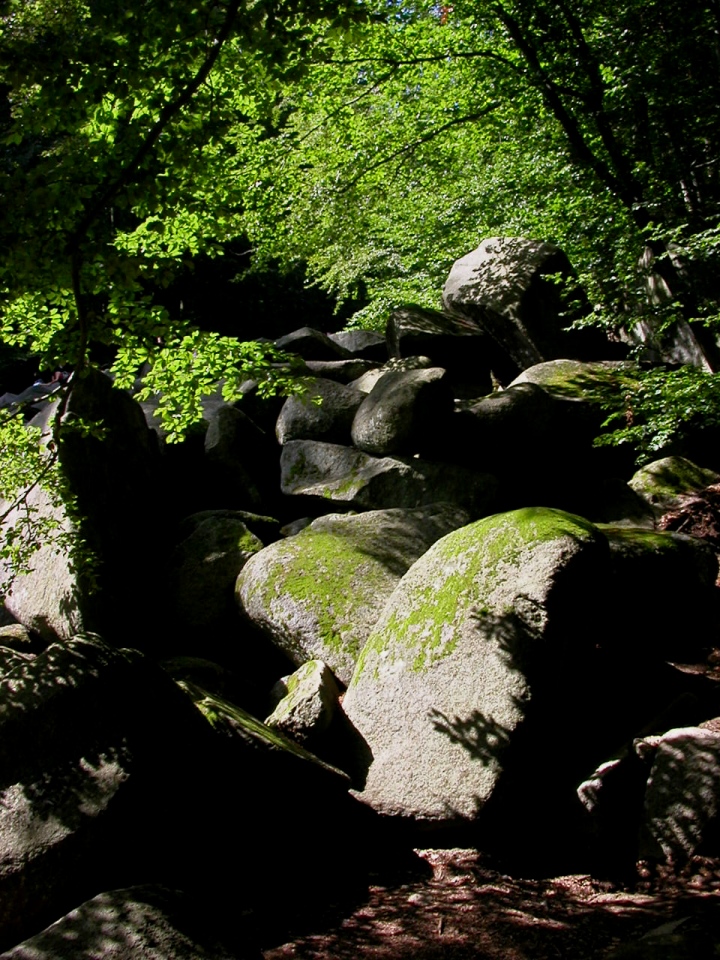|
Nibelungen Railway
The Nibelung Railway (german: Nibelungenbahn) is a 23.9 km long electrified line between Worms Central Station, Worms in the German state of Rhineland-Palatinate and Bensheim station, Bensheim in Hesse. Its name refers to the fact that the line connects several places that play an important role in the Nibelung legend. History After 1846, when the Main-Neckar Railway was opened in the north-south direction along the Bergstraße Route, Bergstraße (Mountain Road), it was also planned to build a railway to open up the Hessian part of the ''Vorderer Odenwald'' ("forward Odenwald", the western Odenwald near the Bergstraße). One aim was to connect raw materials originating from this area with the port of Worms. In the 1860s, the preliminary planning phase began, with both the town of Bensheim and the more southerly located Heppenheim campaigning to be picked as the starting point of the Odenwald line. One problem, however, was dealing with the slopes across the Bergstraße. Despi ... [...More Info...] [...Related Items...] OR: [Wikipedia] [Google] [Baidu] |
Worms Hauptbahnhof
Worms Hauptbahnhof is, along with ''Worms Pfeddersheim'' station, one of two operational passenger stations in the Rhenish Hesse city of Worms, Germany. The station with its pedestrian underpass is also an essential link between the eastern and the western parts of central Worms. Every day it is used by about 15,000 people. History Beginnings The history of the railway to Worm began in 1836, when the governments of France and Bavaria were planning to build a railway along the western bank of the Rhine between Basel and Cologne via Strasbourg and Mainz. Two years later, however, the plans were dropped for economic and military reasons by the other states the railway would have crossed: the Grand Duchies of Baden, Hesse and the Kingdom of Prussia. Instead, the Main-Neckar line was built on the east side of Rhine. Finally, in 1844 some citizens in Mainz and Worms took the initiative to establish a company for building a railway from Mainz to Worms. The private company constructing ... [...More Info...] [...Related Items...] OR: [Wikipedia] [Google] [Baidu] |
Rhine Bridge (Worms)
The Worms Rhine Bridge (German: Rheinbrücke Worms) is a two-track railway bridge that spans the Rhine river to the north of Worms, Germany, forming part of the Worms–Biblis railway. 1900 bridge Already in 1868, the Hessian Ludwig Railway was obliged, under its concession for the Darmstadt-Worms line, to build a bridge over the Rhine as soon as its finances allowed. From 1870 to 1901, rail traffic used the Worms–Rosengarten train ferry, a ferry between the port of Worms and Rosengarten on the eastern side of the Rhine. An agreement was signed in 1894 by the city, the government of the Grand Duchy of Hesse and the railway company for the construction of the Rhine bridge as part of the reconstruction of Worms station. The construction was first announced in 1896, but the start of construction was delayed until mid 1898, due to the nationalisation of the Hessian Ludwig Railway Company in 1897. All of the construction of the 961 metre-long structure was carried out by the ''A ... [...More Info...] [...Related Items...] OR: [Wikipedia] [Google] [Baidu] |
Weinheim (Bergstraße) Station
Weinheim (; pfl, Woinem) is a town with about 43,000 inhabitants in northwest Baden-Württemberg, Germany. It is in the Rhine-Neckar Metropolitan Region, approximately north of Heidelberg and northeast of Mannheim. Weinheim is known as the "Zwei-Burgen-Stadt", the "town of two castles", after two fortresses overlooking the town from the edge of the Odenwald in the east. Geography Weinheim is situated on the Bergstraße Route, Bergstraße theme route on the western rim of the Odenwald. The old town lies in the valley, with the new part of town further to the west. The Market Square is filled with numerous cafes, as well as the old ''Rathaus'' (guildhall). Further to the south is the ''Schlossgarten'' (Palace Garden) and the ''Exotenwald'' (Exotic Forest), which contains species of trees imported from around the world, but mostly from North America and Japan. History Weinheim celebrated its 1250th anniversary in 2005. The earliest record of Weinheim dates back to 755 CE, whe ... [...More Info...] [...Related Items...] OR: [Wikipedia] [Google] [Baidu] |
Weschnitz Valley Railway
The Weschnitz Valley Railway (German: ''Weschnitztalbahn'') is a railway line in Germany that runs from Weinheim an der Bergstraße in the valley of the River Weschnitz The Weschnitz is a right tributary of the Rhine running through the German states of Hesse and Baden-Württemberg. The name of the river traces to the Celtic god Visucius, who was worshiped in the region. The river source is in the Odenwald, ... to Fürth im Odenwald. External links Weinheim Railway SocietyHistory of the ''Weschnitztalbahn'' and information about the work of IG Pro Schiene Weschnitztal- and ÜberwaldbahnPhotographs of the Überwald and Weschnitz Valley Railways {{grs Railway lines in Hesse Odenwald ... [...More Info...] [...Related Items...] OR: [Wikipedia] [Google] [Baidu] |
Mannheim
Mannheim (; Palatine German: or ), officially the University City of Mannheim (german: Universitätsstadt Mannheim), is the second-largest city in the German state of Baden-Württemberg after the state capital of Stuttgart, and Germany's 21st-largest city, with a 2020 population of 309,119 inhabitants. The city is the cultural and economic centre of the Rhine-Neckar Metropolitan Region, Germany's seventh-largest metropolitan region with nearly 2.4 million inhabitants and over 900,000 employees. Mannheim is located at the confluence of the Rhine and the Neckar in the Kurpfalz (Electoral Palatinate) region of northwestern Baden-Württemberg. The city lies in the Upper Rhine Plain, Germany's warmest region. Together with Hamburg, Mannheim is the only city bordering two other federal states. It forms a continuous conurbation of around 480,000 inhabitants with Ludwigshafen am Rhein in the neighbouring state of Rhineland-Palatinate, on the other side of the Rhine. Some northe ... [...More Info...] [...Related Items...] OR: [Wikipedia] [Google] [Baidu] |
Heppenheim
Heppenheim (Bergstraße) is the seat of Bergstraße district in Hesse, Germany, lying on the Bergstraße on the edge of the Odenwald. It is best known for being the birthplace of 4-time Formula One World Champion Sebastian Vettel. Geography Location The town is set on the vineyards below the mediaeval Starkenburg (castle). Defining for the townscape, besides the castle, is ''St. Peter'', the “Cathedral of the Bergstraße” as the big Catholic church is known locally; it was consecrated on 1 August 1904, and is not a bishop's seat. Heppenheim lies centrally on ''Bundesstraßen'' 3 and 460, and Autobahn A 5/ A 67, almost halfway between Heidelberg and Darmstadt, in southern Hesse on the boundary with Baden-Württemberg, and is Hesse's southernmost district seat. The town's official designation is “Heppenheim an der Bergstraße”. In the local Palatinate German dialect, the town is also called ''Hepprum''. “Bergstraße” is not only the name given t ... [...More Info...] [...Related Items...] OR: [Wikipedia] [Google] [Baidu] |
Bensheim
Bensheim () is a town in the Bergstraße district in southern Hessen, Germany. Bensheim lies on the Bergstraße and at the edge of the Odenwald mountains while at the same time having an open view over the Rhine plain. With about 40,000 inhabitants (2016), it is the district's biggest town. Geography Location The town lies at the eastern edge of the Rhine rift on the slopes of the western Odenwald on the Bergstraße. The nearest major cities are Darmstadt (some to the north), Heidelberg (some to the south), Worms (some to the west) and Mannheim (some to the southwest). The district seat of Heppenheim lies roughly to the south. The Lauter flows through Bensheim, coming from the Lauter valley from the east, which after it passes through Bensheim is known as the Winkelbach. In the south of town runs the Meerbach, also coming from the Odenwald (but from the Zell valley). Mostly channelled underground and only coming above ground at the western edge of town is the ''Neuer ... [...More Info...] [...Related Items...] OR: [Wikipedia] [Google] [Baidu] |
Odenwald
The Odenwald () is a low mountain range in the German states of Hesse, Bavaria and Baden-Württemberg. Location The Odenwald is located between the Upper Rhine Plain with the Bergstraße and the ''Hessisches Ried'' (the northeastern section of the Rhine rift) to the west, the Main and the Bauland (a mostly unwooded area with good soils) to the east, the Hanau-Seligenstadt Basin – a subbasin of the Upper Rhine Rift Valley in the Rhine-Main Lowlands – to the north and the Kraichgau to the south. The part south of the Neckar valley is sometimes called the ''Kleiner Odenwald'' ("Little Odenwald"). The northern and western Odenwald belong to southern Hesse, with the south stretching into Baden. In the northeast, a small part lies in Lower Franconia in Bavaria. Geology The Odenwald, along with other parts of the Central German Uplands, belongs to the Variscan, which more than 300 million years ago in the Carboniferous period ran through great parts of Europe. The cause ... [...More Info...] [...Related Items...] OR: [Wikipedia] [Google] [Baidu] |
Bergstraße Route
Bergstraße or Bergstrasse can refer to: *Bergstraße Route, literally "Mountain Road", in the Odenwald of Baden-Württemberg and Hesse, Germany *Bergstraße (district), a district in Hesse, Germany *Hessische Bergstraße The Hessische Bergstraße ("Hessian Mountain Road") is a defined region (''Anbaugebiet'') for wine in Germany located in the state of Hesse among the northern and western slopes of the Odenwald mountain chain. With only of vineyards it is the ..., a Hessian winegrowing region * Badische Bergstraße, a winegrowing region in Baden-Württemberg, Germany {{disambig, geo ... [...More Info...] [...Related Items...] OR: [Wikipedia] [Google] [Baidu] |
Nibelung
The term Nibelung (German) or Niflungr (Old Norse) is a personal or clan name with several competing and contradictory uses in Germanic heroic legend. It has an unclear etymology, but is often connected to the root ''nebel'', meaning mist. The term in its various meanings gives its name to the Middle High German heroic epic the ''Nibelungenlied''. The most widespread use of Nibelung is used to denote the Burgundian royal house, also known as the Gibichungs (German) or Gjúkingar (Old Norse). A group of royal brothers led by king Gunther or Gunnar, the Gibichungs are responsible for the death of the hero Siegfried or Sigurd and are later destroyed at the court of Attila the Hun (called Etzel in German and Atli in Old Norse). This is the only use of the term attested in the Old Norse legends. In medieval German, several other uses of the term Nibelung are documented besides the reference to the Gibichungs: it refers to the king and inhabitants of a mythical land inhabited by dw ... [...More Info...] [...Related Items...] OR: [Wikipedia] [Google] [Baidu] |
Worms Central Station
Worms Hauptbahnhof is, along with ''Worms Pfeddersheim'' station, one of two operational passenger stations in the Rhenish Hesse city of Worms, Germany. The station with its pedestrian underpass is also an essential link between the eastern and the western parts of central Worms. Every day it is used by about 15,000 people. History Beginnings The history of the railway to Worm began in 1836, when the governments of France and Bavaria were planning to build a railway along the western bank of the Rhine between Basel and Cologne via Strasbourg and Mainz. Two years later, however, the plans were dropped for economic and military reasons by the other states the railway would have crossed: the Grand Duchies of Baden, Hesse and the Kingdom of Prussia. Instead, the Main-Neckar line was built on the east side of Rhine. Finally, in 1844 some citizens in Mainz and Worms took the initiative to establish a company for building a railway from Mainz to Worms. The private company constructin ... [...More Info...] [...Related Items...] OR: [Wikipedia] [Google] [Baidu] |
Rheinhessen Railway
Rhenish Hesse or Rhine HesseDickinson, Robert E (1964). ''Germany: A regional and economic geography'' (2nd ed.). London: Methuen, p. 542. . (german: Rheinhessen) is a region and a former government district () in the German state of Rhineland-Palatinate. It is made up of territories west of the Upper Rhine river that were part of the Grand Duchy of Hesse and its successor in the Weimar Republic, the People's State of Hesse from 1816 to 1945. The hilly countryside is largely devoted to vineyards, comprising the Rheinhessen wine region. Geography Rhine Hesse stretches from the Upper Rhine Plain on the west bank of the Rhine up to the Nahe and Alsenz rivers in the west and down to the mouth of the Isenach in the south. The region borders on the Rhineland in the northwest, on the Palatinate in the southwest, and on South Hesse beyond the Rhine. The Rhenish-Hessian Hills along the Selz river, also called the "land of the thousand hills", reach up to at the summit of the Kappe ... [...More Info...] [...Related Items...] OR: [Wikipedia] [Google] [Baidu] |






